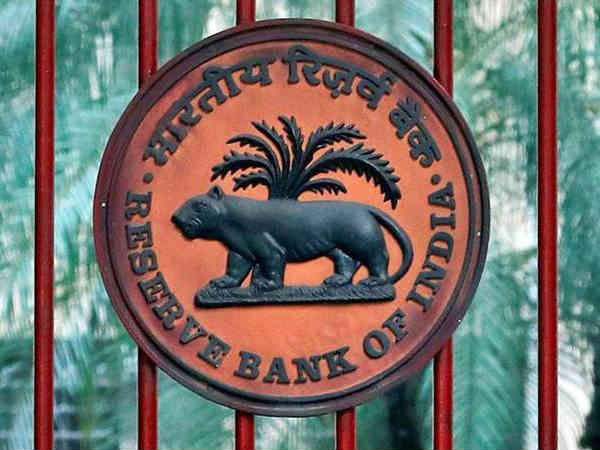How Will RBI's Latest Announcements Affect Loans, FDs And MF Investments?
On Friday, the Reserve Bank of India (RBI) announced some measures that were aimed at increasing liquidity in the economy while supporting the financial system in the country.

- Reverse repo cut was reduced to 3.75 percent from 4 percent earlier to help banks lend more. Reverse repo rate is the rate at which RBI borrows money from commercial banks in the country. The reduction in the rate will make it less attractive for banks to park money with the central bank, thus motivating them to lend to customers instead.
- The 3-month moratorium announced will be excluded from the 90-day classification norms of NPAs (non-performing assets) for those accounts which have availed the moratorium facility.
- Liquidity Coverage Ratio requirement for scheduled commercial banks will be brought down from 100 percent to 80 percent with immediate effect. This will also banks more money in hand to lend to customers.
- Banks have been asked not to make dividend payout until further notice.
- RBI will conduct a second targeted long-term repo operation (TLTRO) for an initial aggregate amount of Rs 50,000 crore of which at least 50 percent of the amount invested must go to mid and small-sized NBFCs and microfinance institutions (MFIs).
How will these measures affect you?
Equity or equity-linked mutual funds
Whether you have directly invested in banking stocks or the financial sector players, or if you have an equity-based mutual fund investment, no addition in concerning factors than those already prevailing for the sector have risen from these recently announced RBI measures.
As for the ease in NPA classification, it is a much-needed relaxation provided by the central bank to protect the country's financial sector in the current unprecedented situation. While COVID-19 may be a health crisis, the lockdown and other measures implemented to curb the spread of the disease could cause an economic crisis if cash is not dispursed by lenders to those who need the money because they are busy trying to save their own business from failing.
NPAs is an important indicator of the health of a financial institution and inaction from the central bank right now would affect the capital adequacy, causing rating downgrades in an attempt to keep with the regulatory requirements of RBI, eventually hurting their share prices.
This is because, in March, RBI gave all categories of lenders the option to allow their customers to seek a 3-month moratorium on EMI payments which affects the income earnings capacity of banks and other financial institutions due to situation beyond their control, calling for the need to re-define what constitutes as a non-performing asset or a bad loan.
RBI has also asked these lending institutions to maintain higher provisions of 10 percent on standstill accounts which would be a cushioning against potential defaults from customers on loans already sanctioned and reduce the impact on the balance sheets of these institutions.
The LCR requirement brought down to 80 percent for scheduled commercial banks to increase liquidity will be gradually restored to 90 percent by October 2020 and 100 percent by April 2021 and the non-declaration of dividends by banks will help them keep their balance sheet strong.
Further, the second TLTRO is targeted at NBFCs, major lenders to the weakest customers of India and the MSME section. It is primarily to protect the sector which has remained under pressure after the IL&FS group defaults. The TLTRO will give NBFCs and microfinance institutions a window to keep lending to its customers that are expected to the most affected by COVID-19 lockdown.
These RBI measures were are all intended to provide uninterrupted lending to businesses and individuals who need them to survive amid the COVID-19 induced economic crisis. It does not mean that it is an alarm of possible cover-up of an upcoming problem in the financial sector.
However, the unprecedented situation at hand could become a test for the survival of the fittest. These institutions, on one hand, cannot declare dividends and need to have higher provisioning and on the other hand, have received relaxation on NPA recognition.
This means that if a bank or NBFC already has a strong balance sheet and conservative lending policies, investors will move to these stocks as these are going to come out of the COVID-19 situation least affected.
For mutual fund investors, a major chunk of investment in most funds is in financial sector stocks as they also have a large representation in Nifty 50. The dividend stoppage is not a major factor for these investors or those who have directly invested in banking stocks because 1) the dividend will be retained in the balance sheet which could benefit the stock value 2) NBFCs and private banks are not known for their high dividend yield, unlike PSUs, and will not have a major impact.
Loan interest rates
With the reduction in LCR and reverse repo rate, banks will be forced to lend their money to customers rather than safe-keeping with RBI, reducing their spread/margin, one of the factors that decide the interest rates.
After the repo rate cut announced in March coupled with measures announced on 17 April, banks will want to push loans to customers to earn more, which could make loans cheaper.
Fixed deposit interest rates
FD rates are generally affected by repo rate cuts which were announced in March. However, excess liquidity in the economy and possibly further rate cuts in the next Monetary Policy meeting will push the interest rates offered on deposits lower.
Disclaimer
The article is not a solicitation to buy, sell in securities mentioned in the article. Greynium Information Technologies Pvt Ltd, its subsidiaries, associates and the author do not accept culpability for losses and/or damages arising based on information in this article.
































